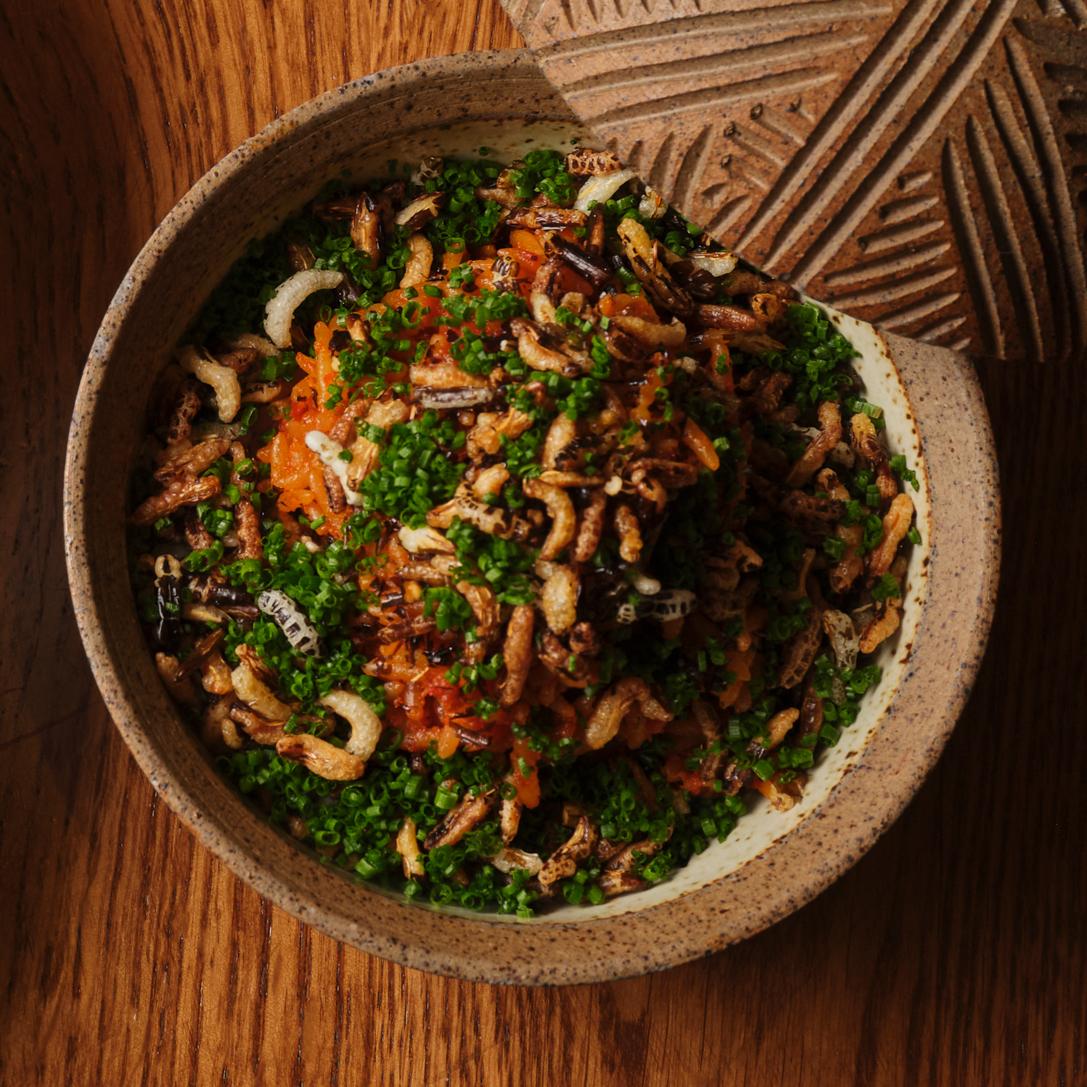Jollof rice. Is it Nigerian? Is it Ghanaian? According to UNESCO, the highly-popular and hotly contested West African dish actually originates from Senegal. Arguments about where jollof rice comes from – and which country makes the best – have been going on for longer than most of us can remember. One thing that’s not up for debate, though, is how delicious that rice dish is. A good jollof, like the kind you might find at street food specialists Jollof Mama, will always have the right balance of sweet, savoury, and spicy as well as an addictively fluffy texture. It won’t be gummy, it won’t blow your head off, and it won’t sit heavy in your stomach all night. The sign of a good jollof is how easy it is to eat, making it an ideal dish for lining your stomach for a night of drinking or sharing with your friends and family.
The recipe for the jollof rice at Akoko – a West African restaurant in Fitzrovia that serves jollof alongside grilled blue lobster and a perfectly balanced carrot sauce – is based on founder Aji Akokomi’s family recipe. In order to help us (and you) better understand how to cook jollof rice, we asked Aji some important questions about everyone’s favourite rice dish.
What is so special about jollof rice?
What makes jollof rice so special are the rich and complex flavours packed into the dish; a combination of sweet, umami, spices and the much-loved smoky aroma. The deep flavours generate excitement, fond memories, and a sense of nostalgia.
What is the secret ingredient in your jollof rice?
Our special chicken broth, known as “Omi Eran” in Yoruba or “jollof broth” in the Akoko kitchen. We have a two-step process to make our chicken broth. First, we cook chicken bones and wings with onions, ginger paste, bay leaves, homemade umami paste and spices in a big stockpot for one hour. Next, we strain the broth and then leave it to cool. After that, we then transfer the cooked wings and other bones to the pressure cooker and cook for another two hours. Finally, the broth is strained, chilled, and mixed with the first broth.
What are the best spices for jollof rice?
We only use traditional jollof spices. The spices used from recipes from back home are: scotch bonnet, ginger, garlic, white peppercorns, curry powder and dried thyme. We do not deviate from these spices.
How long should you parboil rice for jollof rice?
Parboiling is not required as it could lead to overcooked and mushy rice. Thoroughly wash the rice a couple of times instead.
How do you make sure your jollof rice doesn’t burn?
Cooking in the oven will reduce the risk of the rice getting burnt.
Which country makes the best jollof rice?
I am biased to say Nigeria, but I appreciate the different variations. I like to eat jollof with fish and vegetables as it is eaten in Senegal and Gambia. The combination of the simplicity of the spices added and the deep umami of the meat or chicken broth (omi eran) makes Nigerian jollof so special.
Jollof rice, grilled blue lobster, carrot sauce. Photograph: Jodi Hinds.
How have people reacted to Akoko adding ingredients like lobster to your jollof rice?
They love it and appreciate the nod to the origins of jollof from Senegambia region where it is traditionally eaten with almost mainly fish.
Where else can you find good jollof rice in London?
Most West African restaurants will serve jollof. One I particularly recommend is Chishuru, soon to be our neighbours in Fitzrovia.
